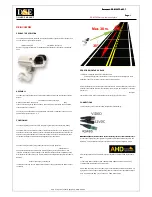
Service
2029839 [Rev. 3 - en]/2019-03-22
Page 19 | 24
Chalk lines
These are light stripes of the impregnating material on the
fabric surface. They result from handling the fabric during
production and assembly of the units. Although the fabric
is handled with special care, these effects cannot be fully
avoided in dark fabrics.
Waviness in the seams and fabric panels
As the fabric is wound onto and off of the shaft, it is
tightened more at the borders, seams and panels than
between the seams. The resulting tension in the fabric can
lead to waviness (e. g. waffle or fishbone patterns) that
"digs" into the fabric. The waves are visible when the unit is
open.
Waffling
Because of the production method, waffling may form under
certain weather conditions and in certain fabric sizes. This
effect is more visible in unfavourable lighting conditions.
The formation of waffling is accelerated and enhanced
through wetness (humidity, rain). If a fabric that has been
"softened" in this way is retracted, waffling and wrinkles can
become particularly pronounced.
Weave flaws
Spinning of the yarns as well as warping in the weaving mill
and the weaving process itself is executed under tension.
The yarn may break. This will lead to knots. Irregular thread
thicknesses are seen as light areas or burls in the fabric.
4.4
Spare parts/repairs
CAUTION
Personal injury resulting from inappropriate repairs!
To be able to perform work on the product safely,
it is necessary to be familiar with its functions and
structure. A lack of appropriate product knowledge
may lead to dangerous situations.
The product should only be repaired by a
qualified specialist.
INFO
To ensure that your product will operate properly
on a continuous basis and to avoid changing
its approved status, use original spare parts
only. Contact your WAREMA specialist dealer if
necessary.
4.4.1
Replacing the heating element
De-energise the radiant heater before performing
any work on it.
Disconnect the product from the power supply.
Secure the product against being switched on
again and verify that it is de-energised.
NOTICE
Product damage due to incorrect procedure when
replacing the heating element!
Finger prints on the heating element may shorten
the product service life.
Never touch the heating element with bare
hands.
To change the heating element, wear soft gloves
or use a soft cloth.
Removing the safety grille
2
3
1
1
Safety grille
3
Housing cover
2
Screws
Fig. 2:
Removing the safety grille
De-energise the radiant heater.
Let the radiant heater cool down.
Disconnect the radiant heater by releasing the
connecting screw from the wall or bearing tube holder.
Place the radiant heater on a suitable soft surface.
Shift the safety grille [1] sideways until one side is free
and then pull the safety grille [1] out forward.
Unscrew the screws [2] on both sides on the housing
cover [3] using a suitable tool.
Keep the parts for use later on.






































